The relic at centre of a 1920s High Society love triangle: How ruin from the ancient palace of Persepolis was gifted to Virginia Woolf by her lover Vita Sackville-West…and what became of it when their relationship soured over her many affairs
Pieces of a statue given to her husband and lover Virginia Woolf by Vita Sackville-West are to be featured in a new exhibition.
The celebrated author and gardener gathered the fragments when he visited the ruins of the ancient palace of Persepolis in what is now Iran in 1927.
She gave one to her husband Harold Nicholson and the other to writer Woolf, but when the lesbian lovers broke up, she referred to it as ‘that paperweight’ as it represented the ‘ruin’ of their relationship.
The fragments – believed to be from the stone beard of one of the Assyrian bull figures at Persepolis – are on display at Sackville-West’s former home in Kent.
A Persian Paradise at Sissinghurst Castle Garden will also feature photographs from Sackville-West’s travels with her husband and some of the other objects she collected along the way.

Pieces of a statue given to her husband and lover Virginia Woolf by Vita Sackville-West are to be featured in a new exhibition. Above: The celebrated gardener with her husband Harold Nicholson at their home in Kent in 1932
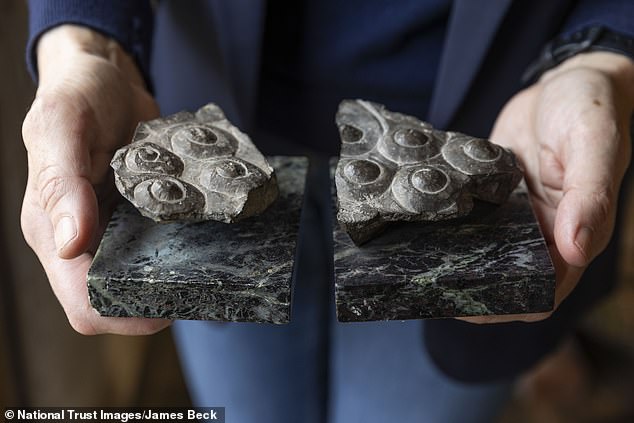
Sackville-West gave one part to her husband Harold Nicholson and the other to the writer Woolf, but when the lesbian lovers fell out, she referred to it as ‘that paperweight’, as it represented the ‘ruin’ of their relationship.
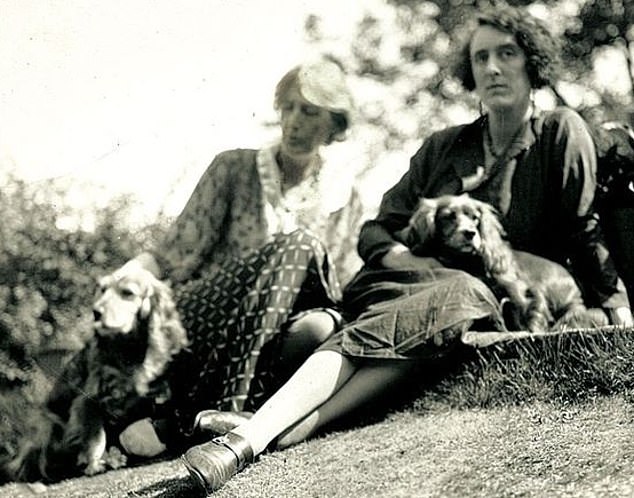
Virginia Woolf and Vita Sackville-West. Despite being married to Nicholson for nearly 50 years until her death in 1962, Sackville-Wes had more than 50 female lovers.
Despite being married to Nicholson for almost 50 years until her death in 1962, Sackville-Wes had more than 50 female lovers.
And her husband, who was a Labor MP and author, also had a series of gay relationships.
Sackville-West met Woolf at a dinner party in London in 1922 and the two had an intense relationship from 1925 to 1928.
Woolf, who is best known for works such as Mrs Dalloway and A Room of One’s Own, was married to fellow writer Leonard Woolf.
Sackville-West told her husband about Woolf’s appearance, writing in one letter: ‘At first you think she is plain, then a kind of spiritual beauty comes upon you, and you find a fascination in looking at her. . . Darling, I’ve quite lost my heart.’
However, the relationship ended when Woolf could not cope with the fact that Sackville-Wes had several other lovers at the same time she was seeing her.
The pair went on to become firm friends, but this did not stop Woolf from taking her own life by blowing stones into the River Ouse in 1941.
Sackville-West wrote to her husband: ‘I think I might have saved her if I had been there.’
The new exhibition opens this Saturday at Sackville West’s former home, which is run by the National Trust.
Experts consider the possibility that Sackville-West cut one of the pieces collected from the Persepolis in half.
As well as the two she gave to Nicholson and Woolf, she kept a third from another part of the palace on her desk.
In 1934, while expressing her regret that Sackville-West no longer loved her, Woolf described the sculpture as ‘cooking dust’.

Sackville-West met Woolf at a dinner in London in 1922 and the two had an intense relationship from 1925 to 1928. Above: Woolf in 1933
Meanwhile, Sackville-West said it was ‘that paperweight’ behind which Woolf kept her letters and notes from rival romantic partners.
The two fragments have been reunited for the first time in almost a century for the new exhibition.
Sackville-West also gave Woolf a blue “rat” dish she had bought at a bazaar in Tehran, the capital of what is now Iran.
The object is usually displayed at Woolf’s former home, Monk’s House, in East Sussex.
The researchers also discovered the history of a set of orange beads owned by Sackville West.
They found they were given to her when she and Nicholson were invited to dine with the Il-Khan, the chief of the Bakhtiari clan.
Later she remembered the ‘string of corals with which he played, and slipped the beads between his fingers as he spoke, as all Persians do; it is lying on my table as I write.’
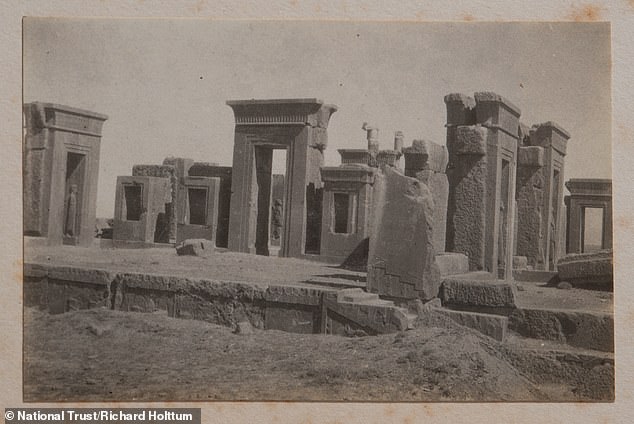
This image shows the ruins of the palace of Persepolis, where the fragments were taken from
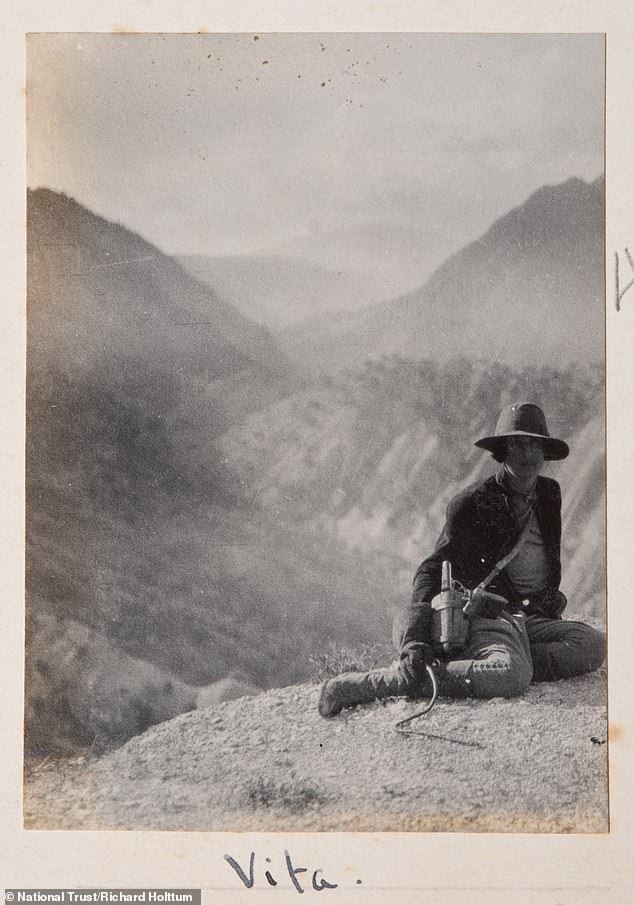
The photographs on display were taken during Sackville-West and Nicholson’s travels in Persia
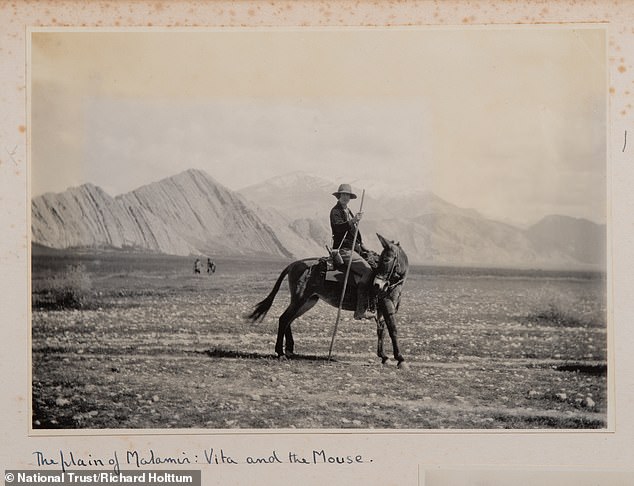
Sackville-West is seen on the back of a donkey during her travels in Persia (now Iran)
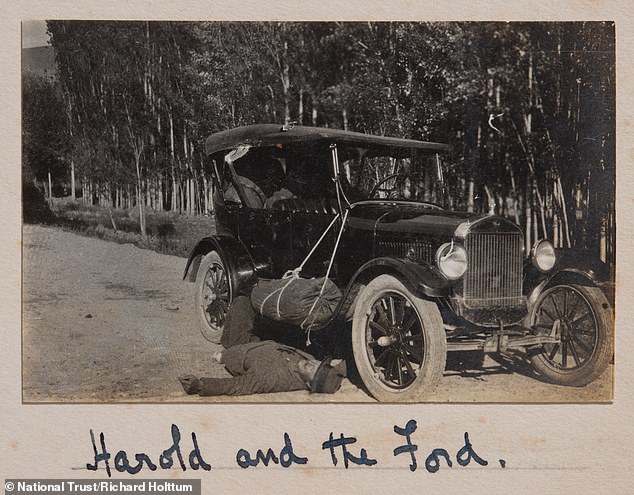
Nicholson is seen lying next to the couple’s Ford car which they used on the trips in Persia
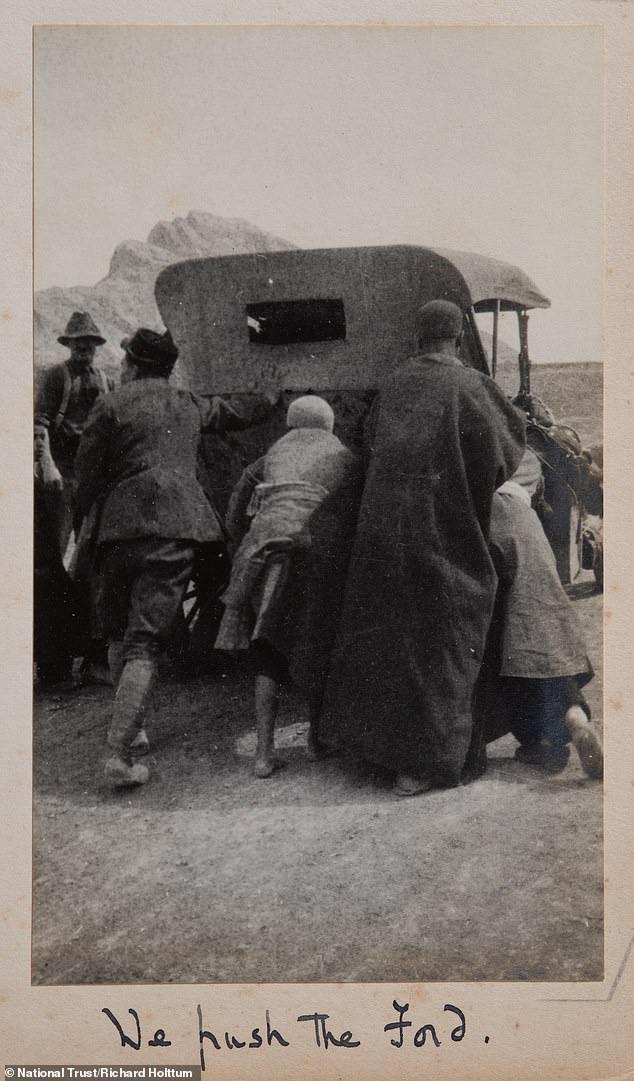
The couple is seen getting help while pushing their car after it apparently broke down
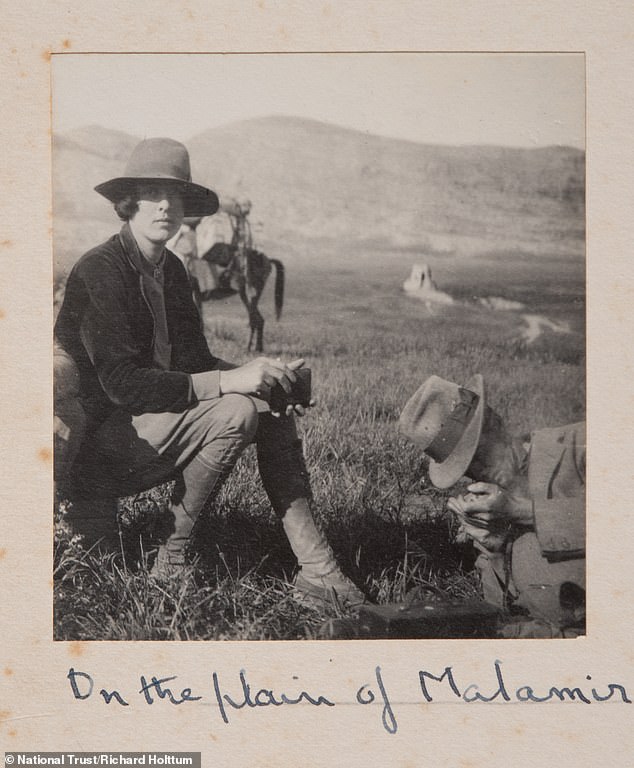
Sackville-West and her husband are seen in Persia (now Iran) in the 1920s
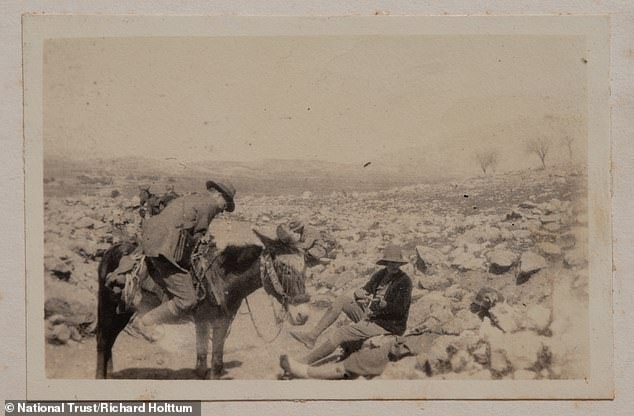
Nicholson is seen mounting his donkey as Sackville-West sits nearby during the tour in Persia

Nicholson poses for a photo. The image is one of several displayed in the new exhibition
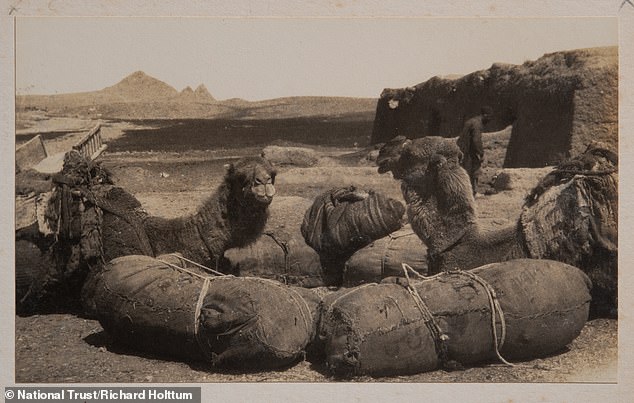
The couple also encountered camels on their journey, as this image shows
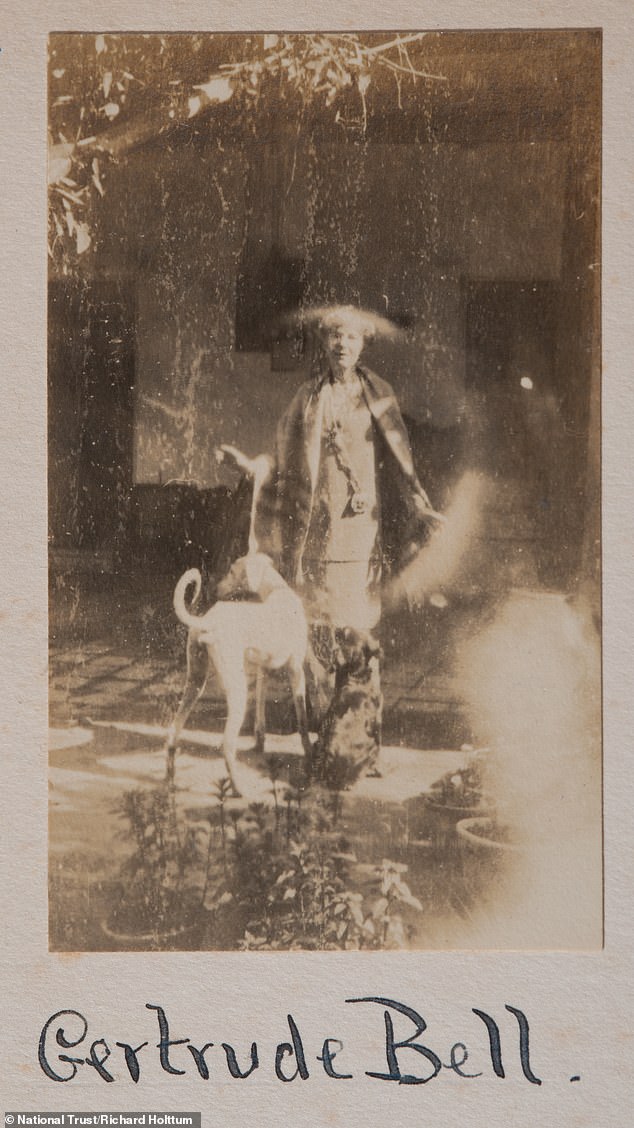
Famous writer and traveler Gertrude Bell can be seen in another of the images
The photographs on display were taken during Sackville-West and Nicholson’s travels in Persia.
One shows Nicholson wrapped in fur, while others show Sackville-Wes riding a donkey.
Another shows Sackville West sitting in front of a beautiful mountain backdrop.
There is also an image of the travelers pushing their Ford car after it broke down.
Nicholson, the son of a diplomat, was born in Tehran in 1886.
He returned to work at the British Embassy in the 1920s and Sackville-Wes visited him twice.
She went on to publish two books about her travels.
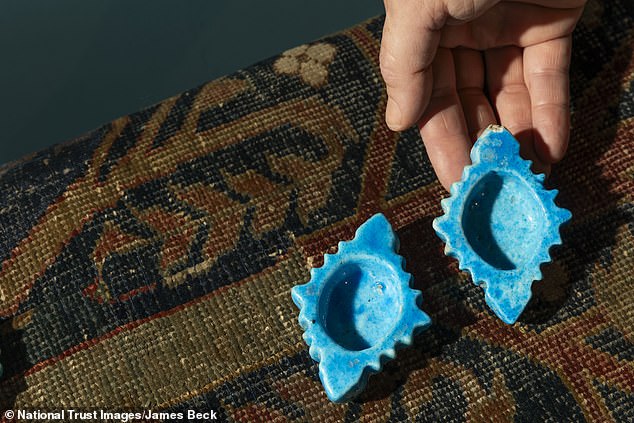
Sackville-West also gave Woolf a blue “rat” dish she had bought at a bazaar in Tehran, the capital of what is now Iran. Above: The dish with another matching one
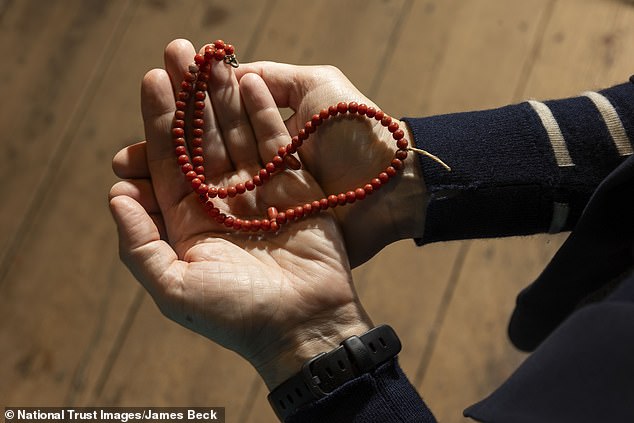
The researchers also discovered the history of a set of orange beads owned by Sackville West. They found they were given to her when she and Nicholson were invited to dine with the Il-Khan, the chief of the Bakhtiari clan
Nicci Obholzer, Senior Home and Collections Officer at Sissinghurst Castle Garden, said: ‘It’s touching to see some of the objects from her travels that Vita gave to Virginia and to Harold reunited for the first time since they were given .
‘We hope visitors will enjoy finding out more about this period in the lives of two of the 20th century’s most eloquent observers and the new discoveries we have made about them that reflect the Sissinghurst we see today.’
Lindsay Allen, senior lecturer in ancient history at King’s College London, added: ‘We have made some exciting discoveries at Sissinghurst which show the impact on Harold and Vita of their Iranian travels.
‘The exhibition is a wonderful opportunity to open a window into British-Iranian encounters in the 1920s.’
For the exhibition research, the National Trust worked with Kings College London, University College London, University of Cambridge and the Victoria & Albert Museum.
A Persian Paradise opens at Sissinghurst on Saturday 14 October to 24 March and is generously supported by The British Institute of Persian Studies and the Iran Society.
For further information visit www.nationaltrust.org.uk/sissinghurst
